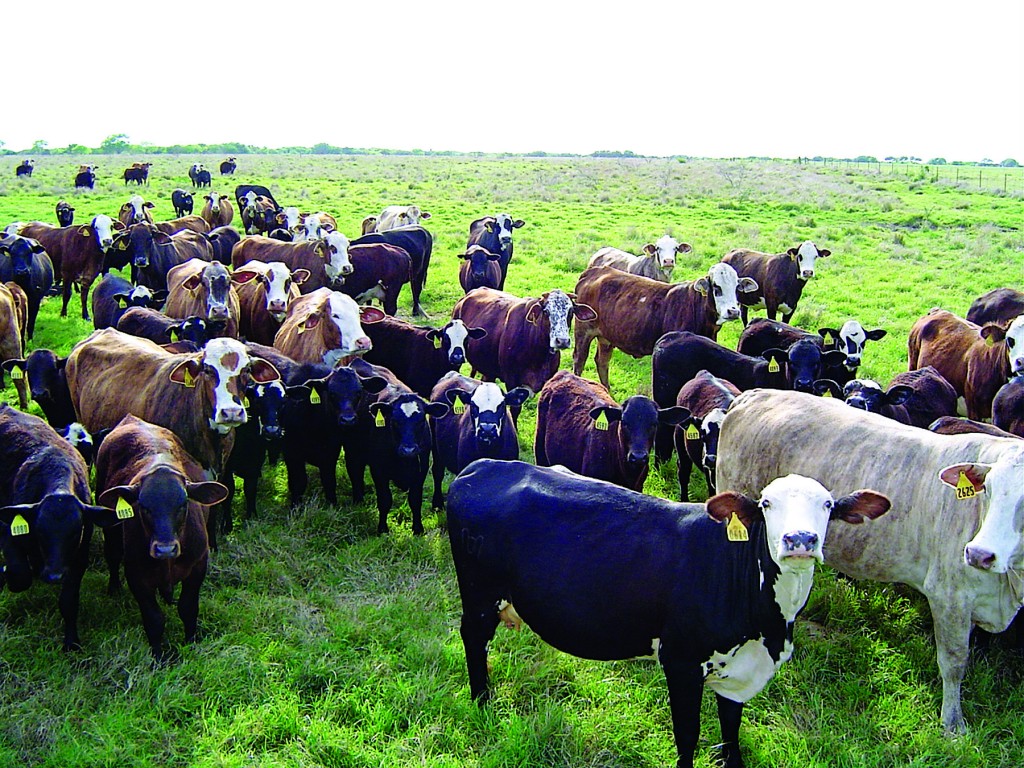Artificial Insemination (A.I.) is a technique that has been around for many years. Livestock systems around the world have recognized the economic advantages of utilizing A.I. as well as many other technologies to enhance productivity. However, the United States’ beef industry has been hesitant to broadly adopt this technology which has the potential to produce higher rates of return on investment than creep feeding, growth promoting implants, ultrasound, embryo transfer, etc. What is the reason for the slow adaptation of this technology? Concerns over cost, labor, results and the application of A.I. to smaller herds appear to be the most common reasons for the hesitancy.
The most commonly mentioned factor that affects the willingness for one to utilize A.I. is the perceived expense.  The cost per A.I. pregnancy can approach and sometimes be reduced below that of natural service (Johnson, 2003). In herds where more than one bull is required to service the herd, the advantage associated with reducing the number of bulls required is itself an improvement in efficiency. In order to compare the cost of A.I. to the cost of natural service, we must first know the cost of natural service. When all factors are considered, the cost of producing a natural service pregnancy/calf can be surprising. Costs for producing a pregnancy via natural service range from $16.00 ($1500 bulls are exposed to 50 cows per sire) to $90 ($3000 bulls exposed to 15 cows per sire) (Johnson, 2003). Compare that to the cost of producing a pregnancy using A.I.: $40.00 -$55.00 in herds of 100 -300 cows with a 50 – 60% pregnancy rate. This figure includes the cost of the cleanup sires.
Research is currently being conducted to address the issues regarding the potential of increased efficiency/profitability of A.I. sired females used as replacements compared to that of replacements sired by natural service. It appears that the potential for increasing return on investment utilizing A.I. has the potential to go beyond simply measuring the phenotype of the resulting progeny.
Second, addressing the issues that additional labor/inputs involves, begs the question concerning the expected increase in returns. An A.I. program requires additional labor in the form of synchronization, estrus detection, and insemination. The following table summarizes the results/returns that could be expected as a result of the use of an A.I. program including increased reproductive efficiency of the herd, earlier weaning age and increased weaning weights. Combined, these factors account for a very significant increase in pounds of calf weaned per cow exposed.
Results of short-term estrus synchronization Artificial Insemination Trial
| Â |
Synchronize-A.I. |
Natural Service |
Difference |
|
|
|
|
|
| Cows |
251 |
100 |
|
| Calving Rate |
90% |
81% |
9% |
| % Calving 1st 30 days |
85% |
62% |
23% |
| % calf crop weaned |
88% |
79% |
9% |
| Weaning Age |
210-9 |
200-12 |
10 days |
| Weaning Weight |
576.9-18.1 |
504.8-21.2 |
72.6 lbs |
| Lbs. calf weaned/cow exposed |
507.9 |
398.4 |
109.5 lbs
|
| Â | Â | Â | Â |
Source: Anderson and Deaton, University of Kentucky
Poor results are often cited as a reason for not pursuing an A.I. program. Poor results can often be attributed to manageable factors such as post-partum nutrition, proper vaccination and disease control and good A.I. program management. Thoughtful preparation and planning, in conjunction with reasonable expectations, will often lead to very good results, even for someone incorporating the technology into their herd for the first time.
Lastly, one of the characteristics unique to the A.I. industry is the amazing flexibility in the methods of application. In other words, an A.I. program can be designed for almost any situation. There is no “restriction†when it comes to herd size for A.I. For example, one might consider for a small herd (25-50 head), a one-time timed insemination program scheduled to occur on the first day of their breeding season. A reasonable expectation would be ~50% conception rate to the A.I., and the herd would have 4 subsequent opportunities to become pregnant to the clean-up sire in a typical 84 day breeding season. One-half of the herd could calve in the first 20-30 days of the calving season with no reduction in reproductive efficiency for the herd. In fact, most data indicates that reproductive efficiency improves under Estrus Synchronization/A.I. programs. For herds of fewer than 25 head, there are options for using A.I. A conventional program such as the normal synchronization, breeding and use of a cleanup sire works very well. In some situations, “A.I. only†programs are very successful. With this option the need for a cleanup sire is eliminated altogether. Regardless of herd size, reproductive efficiency continues to be the single most important measure of profitability, so no A.I. program should be designed that would result in fewer pregnant cows at the conclusion of the breeding season than what might be achieved under normal breeding conditions.
There is no more applicable, user friendly technology for achieving increased reproductive efficiency and genetic improvement than Artificial Insemination. I would conclude with the thought that one should identify “genetic†goals, identify animals with the genetics that move the program in the correct direction and incorporate these genetics using A.I.



